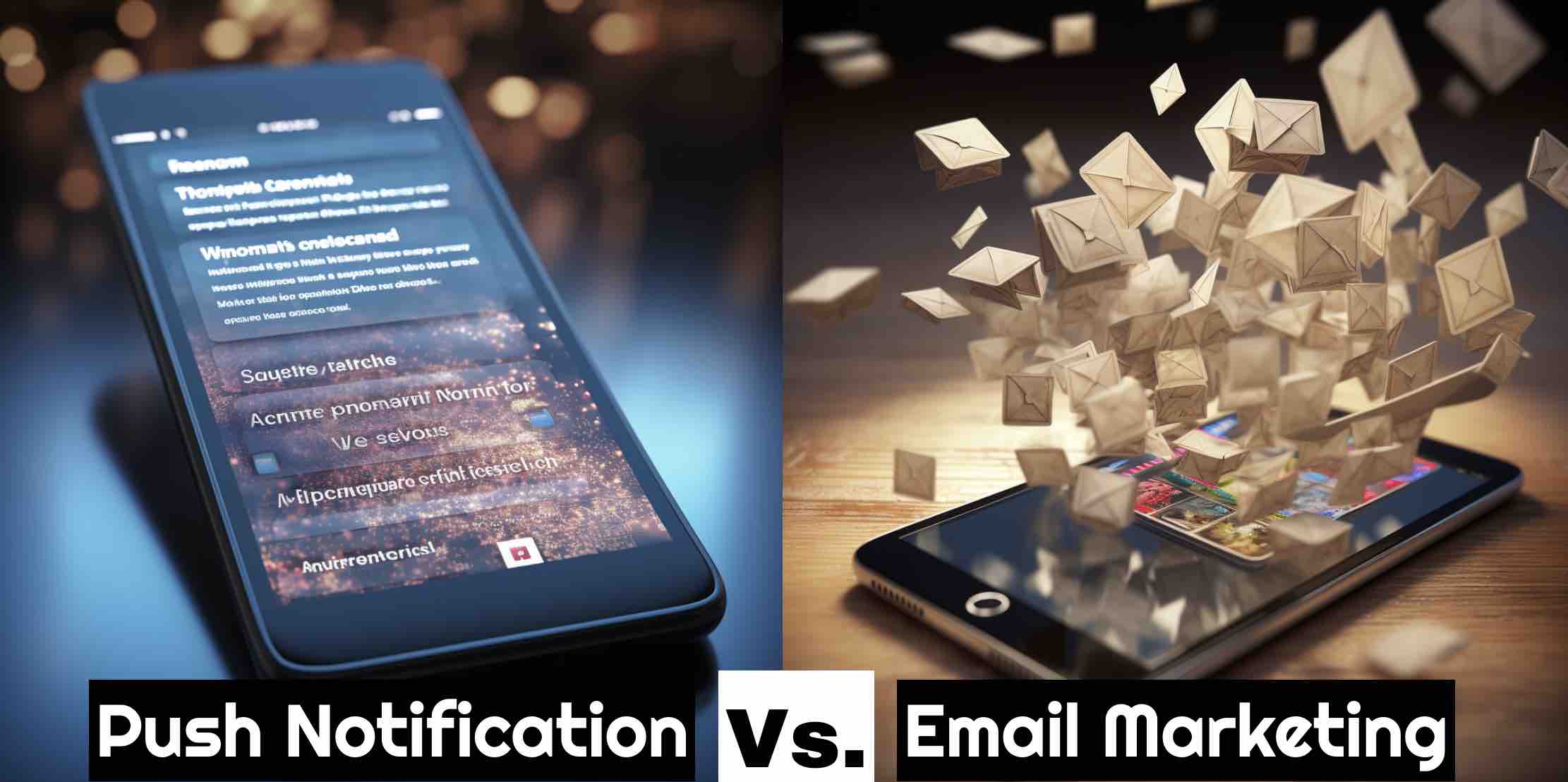Push Notifications vs. Email Marketing: Which One is Better?

In the digital marketing landscape, both web push notifications and email marketing hold significant places. Understanding their strengths, limitations, and appropriate contexts for use can empower marketers to make informed decisions about which channel to use for various objectives.
Understanding Push Notifications and Email Marketing
Push Notifications are brief messages that pop up on a user's device, usually a mobile phone or desktop. They are used to deliver real-time updates, alerts, and other timely information.
Email Marketing, on the other hand, involves sending messages to users' email inboxes. It's a traditional digital marketing tool used for everything from promotional content to newsletters.
Key Differences
- Immediacy: Push notifications are instantaneous and are often read within minutes of receipt. Emails may sit in inboxes for hours or days.
- Content Length: Push notifications are limited in length, forcing conciseness. Emails can be more detailed and comprehensive.
- Opt-in and Opt-out Processes: Users can easily opt-in or opt-out of push notifications, often with a single click. Email unsubscribes might be a bit more cumbersome.
- Personalization and Segmentation: While both channels offer personalization, email provides more room for detailed segmentation and tailored content.
- Engagement Rate: Push notifications typically have higher engagement rates but can also lead to notification fatigue if overused. Emails might have lower open rates, but they allow for more sustained engagement.
When are Push Notifications More Effective?
-
Time-Sensitive Alerts: For urgent updates, like a flash sale or a critical service announcement, push notifications can grab attention quickly.
- Example: A weather app sending immediate storm alerts.
-
Location-Based Marketing: Push notifications can be geo-targeted for location-specific promotions or information.
- Example: A retail app sending a special offer when a user is near a physical store.
-
User Engagement and Retention: For apps and websites, push notifications can remind users to return or engage with new content.
- Example: A gaming app notifying users about a new game feature or event.
-
Simple Calls to Action: When the desired action is straightforward, like checking out a new post or limited-time offer, push notifications can be very effective.
- Example: A news app pushing breaking news alerts with direct links to the story.
Email Marketing's Strengths
- Detailed Content and Storytelling: Emails are better suited for conveying detailed information, stories, and building a narrative around a brand or product.
- Longer Customer Lifecycle Communication: From welcome series to regular newsletters, email is effective for ongoing customer relationship building.
- Greater Design Freedom: Emails allow for rich media, complex layouts, and extensive branding, which are not possible with the simple format of push notifications.
Conclusion
The decision between push notifications and email marketing depends on the specific goals of a campaign. For immediacy and simple calls to action, push notifications are superior. For detailed storytelling, customer education, and long-term relationship building, email marketing is unmatched.
In the end, the most effective digital marketing strategies often involve a balanced, integrated approach that leverages the strengths of both push notifications and email marketing to create a comprehensive, multi-touch customer experience.
